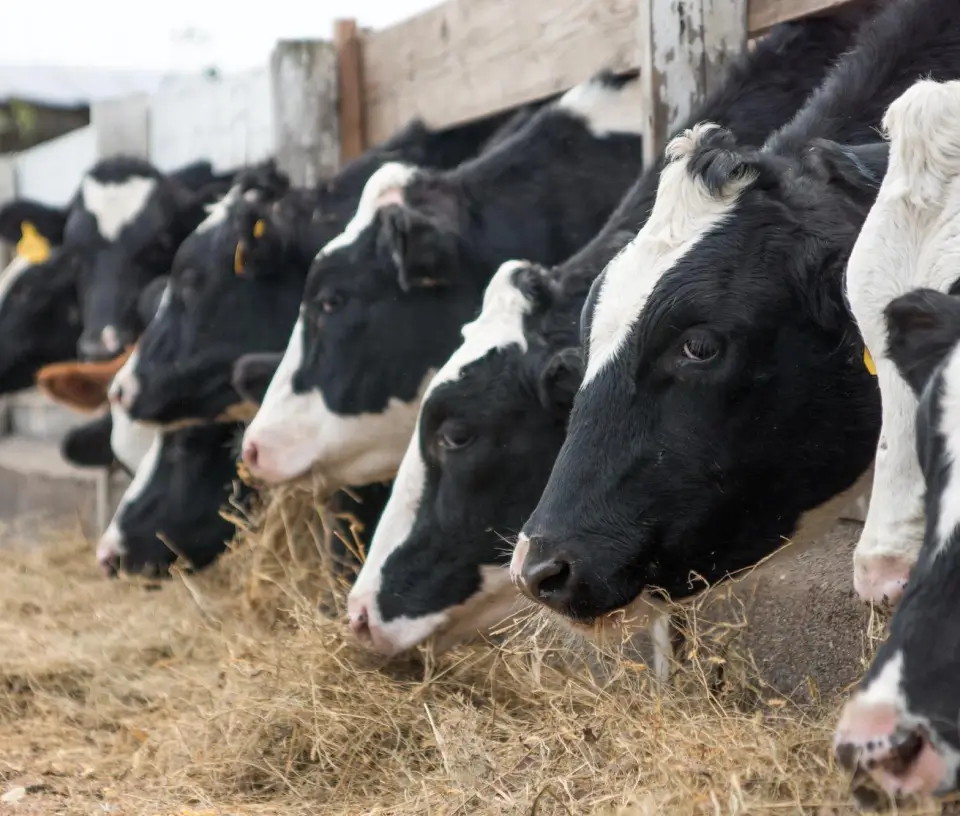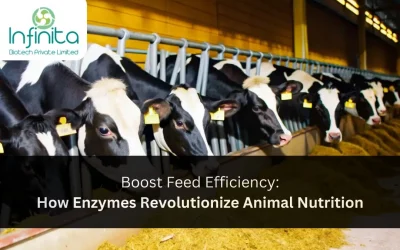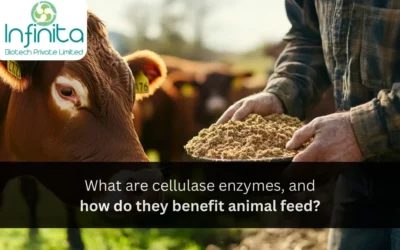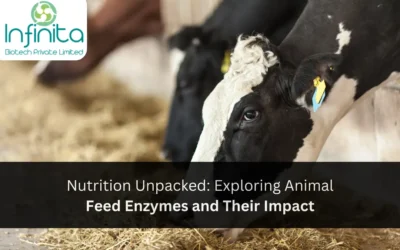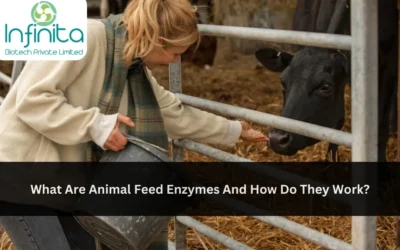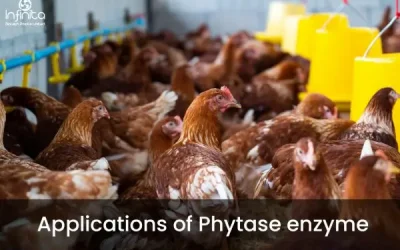Why Are Enzymes Important In Animal Feed?
When animal feed enzymes were first used more than a decade ago, their acceptance was limited to phytase applications for reduced phosphorus excretion. Although feed enzymes have been utilised for many years, we have only scratched the surface as research on feed enzyme technology. The greater understanding of feed enzyme use comes at an ideal time as the demand for high-quality protein across North America and globally continues to rise. With advancements in management and technology, animals are in production for a relatively short time. Producers need to maximise that time efficiently in order to meet increased protein requirements, including getting the most out of the feed. Producers have to be compelled to get smarter concerning optimising animal production in a very property manner — and enzymes supply a chance to try to that.
Basic Enzyme Function And Benefits
Although all enzymes function similarly when supplemented in animal feeds by improving the efficiency of raw material digestion, nutritionists can use them to take different approaches. Each animal feed enzyme offers different characteristics that affect their dietary inclusion rate: their need for protective coatings, where they work within the animal’s gut, and their overall efficacy.
One of the most interesting and important factors of enzyme function is that each type has a very specific role within the animal. Each protein sort acts on a substrate to begin its chemical change inside the body. However, only a certain enzyme can fit into a certain substrate – similar to a lock and key.
Benefits Of Using Enzymes Can Be Realised In Several Ways:
- Reduction in diet costs when the ingredient price matrix allows.
- Growth or feed efficiency can be improved as a result of nutrient release, resulting in a decreased cost per pound of meat.
- Enzymes can also play a role in enteric health management. High-fibre diets alter the viscosity of the gut, and excess fermentation can result in mortality. Pathogenic bacteria can also thrive with an excess of dietary nitrogen.
While phytases and carbohydrases have been well established, proteases are a recent addition to the feed enzyme portfolio. It is important to keep in mind that each specific enzyme within each class is unique and needs to be treated as such. Not all animal feed enzymes are alike in their structure and activity.
Characteristics Of Enzymes
To better understand the limits of animal feed enzymes usage, the fundamental characteristics of enzymes need to be considered first. Enzymes square measure extremely effective biological catalysts capable of fast chemical reactions immeasurable times over, in some cases. Chemically, they are proteins with a highly complex three-dimensional molecular structure. The super-molecule nature of enzymes has vital implications for his or her stability throughout high-temperature feed manufacture and transit through the channel. As proteins, they can be denatured by heat and pH and they can also be subject to proteolysis by digestive enzymes. A unique feature of enzymes is their high substrate-specificity. Each protein breaks down extremely specific substrates at specific reaction sites. Thus, to achieve maximal benefits from enzyme addition, it is necessary to ensure that the enzymes are chosen on the basis of substrates in the ingredients used in feed formulations. In addition, several reaction conditions need to be met for the enzyme to act, these include moisture content, temperature, pH, enzyme concentration, and substrate concentration.
Moisture Content
Enzymes require an aqueous environment to act. Moisture is presumably essential for the quality of the catalyst, solubility of the substrate and catalyst, or both.
Temperature
In general, activity increases up to 40°C and then sharply declines due to the loss of structure through denaturing, which renders the enzyme inactive.
pH
Most enzymes are denatured at low- and high-pH environments. In general, the optimum hydrogen ion concentration for many enzymes is around four to six.
Enzyme Concentration
In theory, the reaction rate is directly proportional to the concentration of enzyme. The reaction rate increases with increasing enzyme concentration because there are more active sites available and this will continue until no more enzyme-substrate complex can be formed. In practice, however, because of other limitations within the digestive tract of animals, this linear relationship does not occur. The relationship will be nonlinear.
Substrate Concentration
In the presence of adequate concentrations of the enzyme, the rate of reaction increases with increasing substrate concentration until the maximum turnover is reached. This happens because there are more substrates than the enzyme can handle. It is noteworthy that enzymes vary considerably in the reaction conditions needed depending on their source (fungal vs. bacterial vs. yeast). The source, therefore, has a major influence on how closely particular enzymes are adapted to the prevalent conditions in the digestive tract and their effectiveness.
Substrates And Enzyme Types
Substrates in feed ingredients can be mainly classified into 3 groups, namely those (1) for which birds produce suitable enzymes in their own digestive tract (e.g. starch, proteins, lipids), (2) for which enzymes are not produced by the bird and not digested (e.g. cellulose), and (3) for which enzymes are not produced by the bird and, in addition to not being digested, have anti-nutritive effects (e.g. β-glucans, pentosans, phytate). Another point of note is that birds are not fed substrates, but ingredients with substrates in complex matrices. For these reasons, the potential nutritive value of ingredients is not realised at the bird level and no common feed ingredient is 100% digested. Even the digestion of substrates (i.e., starch, proteins, and lipids) for which birds produce sufficient amounts of endogenous enzymes is incomplete, with 10 to 20% of these substrates being undigested and excreted. The need to improve the digestion of these undigested substrates is the principal rationale behind the use of exogenous enzymes.
In feed ingredients, the substrates (nutrients and anti-nutrients) exist as complexes, limiting the accessibility to enzymes. Despite advances, the chemistry and structure of most target substrates are still poorly defined. For example, the chemistry of NSP in numerous ingredients varies wide. Though basic quantitative information on the type of sugars making up the NSP is available for cereals, corresponding information for other ingredients is lacking. The efficacy of animal feed enzymes can be greatly improved if the chemistry of the target substrates is more precisely understood. Matching an enzyme, however, does not guarantee the efficacy of the enzyme in degrading the substrate, and affinity must also be considered using 3 fungal xylanases that are of different substrate affinities, demonstrated that substrate specificity is dependent on the source of the enzyme.
For animal feed enzymes to be effective, an adequate enzyme to substrate ratio must be present in the diet. A complicating factor is that a particular substrate in one ingredient is not exactly the same as the one found in another ingredient. The substrates differ and the same substrate in different ingredients may respond differently to the enzyme. Such differences arise from the location of the substrate in the ingredient matrix, the presence of other limiting factors, and differences in accessibility or solubility. This has been well illustrated in the case of phytate by Leske and Coon. Those researchers showed that phytate from different ingredients is not similarly susceptible to dephosphorylation and that the reactive, and not total, phytate content is critical in determining the responses to supplemental phytase. It was found, for example, that canola meal contained a relatively high level of total phytate, but less reactive phytate, and does not respond well to added phytase.
